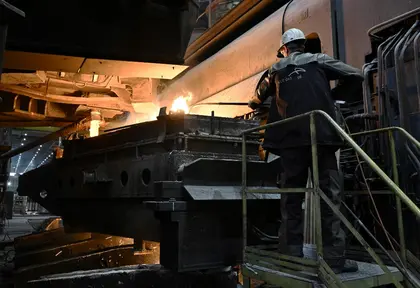While state support to businesses is often controversial – susceptible as it is to lobbying and misuse – it is clear that during the reconstruction of Ukraine’s economy, some kind of programs allocating funding to the private sector are necessary for proper economic revival. Such support will be necessary not just to get Ukrainian businesses back on their feet, but, even more importantly, to attract investment and kick-start fast economic growth that Ukraine so direly needs.
The sad fact is that, since gaining independence, Ukraine has grappled with the challenge of reconstructing its economy, particularly in the industrial sector. Historically, an array of various industrial support programs has been run by the state, mostly with disastrous results.
Soviet legacy
The roots of Ukraine's economic struggles can be traced back to the Soviet era, where industries inherited a system of cross-sectoral subsidies embedded in the planned economy. The transition to a market economy during the 1990s was gradual, resulting in a system of state support characterized by budget allocations, tax privileges and protective customs barriers. Despite significant resources, this support proved ineffective, with manufacturing's share of GDP dwindling from 17-18 percent to just over 10 percent since the early 2000s.
A case in point is the automotive industry which, despite systematic protection through high import duties, faced structural problems such as outdated technologies and low integration into global production chains. The global financial crisis of 2008 dealt a severe blow to the industry, revealing that high import duties alone couldn't address underlying issues. Structural problems demanded substantial investments, which were unattainable during the economic downturn.
The coal industry faced a similar fate, exacerbated by political corruption. Subsidies were primarily used to cover production costs rather than fostering industry development. This approach not only failed to stimulate growth but also facilitated large-scale corruption, diverting funds away from productive sectors of the economy.
Ukraine's agricultural sector too witnessed a myriad of support programs, ranging from special VAT regimes to fixed agricultural taxes. Despite their scale, these programs had drawbacks, including the promotion of raw grain production for export and distortions in the tax system. Over time, these flaws led to program restrictions and ultimately their replacement with direct budget support programs.
Progress and challenges
One significant challenge has been the instability and unpredictability of support programs. Changes in the number and nature of programs from year to year, coupled with funding fluctuations, have rendered them ineffective. The inability of businesses to predict available state support impedes their ability to incorporate it into investment and production planning.
Another challenge is the compensatory nature embedded in support program design. Generally, the state compensates businesses some investment and production costs, but only after this investment or production has taken place. Given the unstable nature of government funding of such programs, this means that the businesses cannot rely on the fund’s availability when making their decisions and essentially ignore the programs in their decision-making process. This deprives the programs of any kind of impact on the investment or even production, making them entirely ineffective.
Despite these challenges, recent years have seen progress in designing support programs, especially in them being more competitive based. Programs like the partial compensation for the cost of agricultural machinery and the "5-7-9" cheap loans initiative demonstrate a shift toward more transparent and competitive mechanisms, making them more market-friendly and less susceptible to corruption.
The way forward
To breathe life into industry support programs, Ukraine must make two key steps: i) guarantee stable financing from the state budget; and ii) adopt non-compensatory funding mechanisms. The volatile nature of budget funding and the reliance on compensatory approaches hinder businesses from factoring support programs into their investment decisions, rendering them ineffective.
This is where the reconstruction funds come in, such as donor funding, Russian reparations, or confiscated assets. These funds offer a more predictable and potentially stable revenue stream, allowing for multi-year program planning. In the context of Ukraine's post-war reconstruction, these funds could play a pivotal role in revitalizing businesses, kickstarting economic recovery, and fostering the revival Ukraine so desperately needs.
The views expressed are the author’s and not necessarily of Kyiv Post.
You can also highlight the text and press Ctrl + Enter



